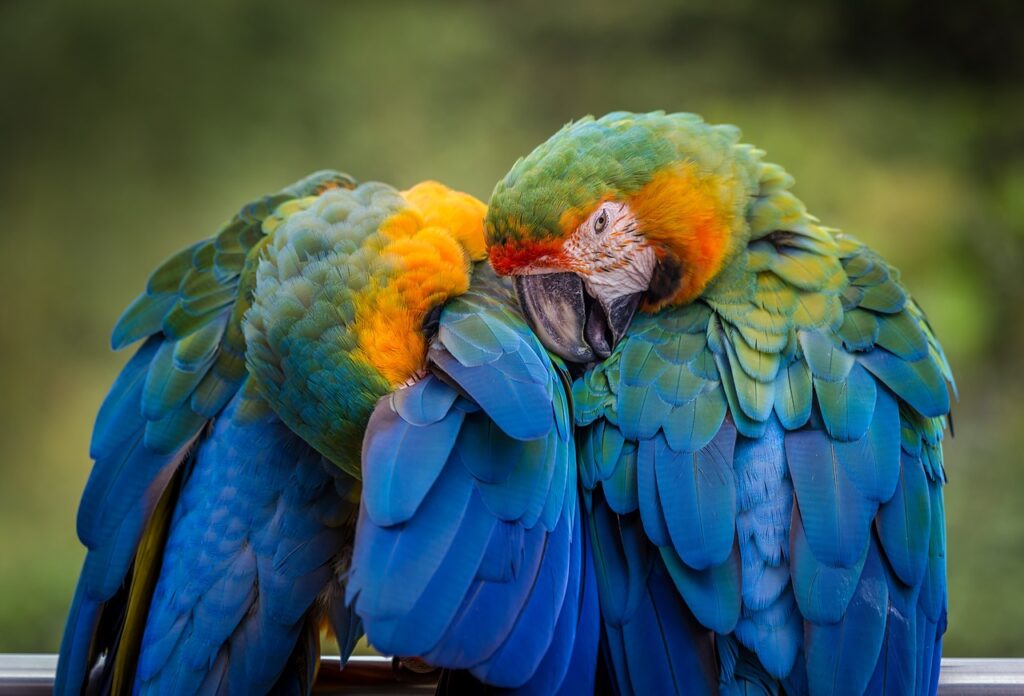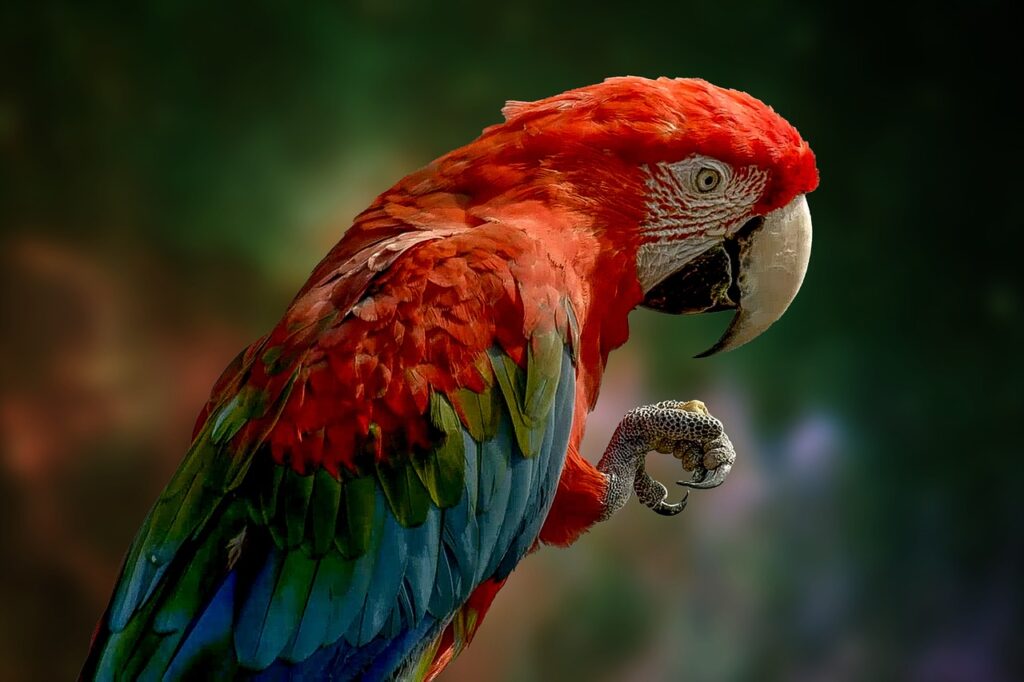Parrots, with their charismatic personalities and vibrant plumage, have captured the hearts of pet owners. These intelligent birds exhibit a remarkable life cycle that encompasses various stages of development. In this comprehensive guide, we’ll dive into every details of the parrots life cycle, from the moment they hatch as fragile chicks to their graceful and wise adulthood.
Understanding the Parrots Life Cycle
The life cycle of a parrot can be categorized into several distinct stages, each marked by significant changes in their physical and behavioral attributes. Let’s explore each stage in detail:
Egg Stage
The journey of a parrot’s life begins within the confines of an egg. Female parrots lay eggs in nests, where they are incubated by both parents. The incubation period typically lasts about 21 to 30 days, depending on the parrot species. During this time, the parents diligently maintain the temperature and humidity required for the eggs to develop.

Hatchling Stage
Once the eggs hatch, they give birth to helpless, blind, and featherless hatchlings. The parents continue to care for their baby, feeding them regurgitated food. Hatchlings are highly dependent on their caregivers during this stage, and their growth is rapid.

Nestling Stage
As the hatchlings mature, they transition into the nestling stage. Feathers begin to grow, and the young parrots develop their distinct plumage. They become increasingly active and curious, often venturing out of the nest, while still relying on their parents for nourishment and protection.

Fledgling Stage
The fledgling stage marks a significant milestone in a parrot’s life. The once flightless chicks begin to exercise their wings and learn to fly. This stage is a critical part of their development as it equips them with the skills needed for survival in the wild.
Juvenile Stage
During the juvenile stage, young parrots continue to refine their flying and foraging skills. They become more independent, often exploring their surroundings and developing their social behavior. This stage can vary in duration, depending on the parrot species, but it generally extends into the first few years of their life.
Adulthood
Reaching adulthood is a complex and gradual process for parrots. It encompasses not only physical development but also the acquisition of social skills and communication. Adult parrots are typically sexually mature, capable of reproducing and forming lifelong bonds with partners.

The Role of Parental Care
Throughout the various stages of the parrot life cycle, parental care plays a crucial role in ensuring the survival and healthy development of the young parrots. Both the mother and father share the responsibilities of incubating the eggs, feeding the hatchlings, and teaching the fledglings vital life skills. Their attentive care and guidance significantly influence the growth and well-being of the offspring.
Reproductive Behavior
The reproductive behavior of parrots is a fascinating aspect of their life cycle. As parrots mature into adulthood, they exhibit unique courtship rituals and behaviors that are specific to their species. Some parrots form monogamous bonds, while others engage in elaborate courtship dances and vocalizations to attract mates.
Lifespan and Aging
Parrots are known for their impressive longevity. Many species have a lifespan ranging from 15 to 80 years, depending on factors such as genetics, diet, and environmental conditions. Understanding the aging process of parrots is crucial for providing appropriate care, as their needs change with age.
Lifelong Learning
Parrots are renowned for their intelligence and capacity for learning. Throughout their life cycle, they continue to acquire new skills, behaviors, and communication techniques. This continuous learning process is a testament to their adaptability and cognitive abilities.
Environmental Factors and the Parrots Life Cycle
The environment in which a parrot is raised has a significant impact on its development. Parrots in the wild experience natural conditions that shape their life cycle, including seasonal variations in food availability and nesting sites. In contrast, captive parrots require careful attention to diet, habitat, and social interactions to ensure they thrive and reach their full potential.
Diet and Nutrition
Proper nutrition is a critical factor in a parrot’s growth and development. Young parrots have different dietary requirements compared to adults, and these nutritional needs change as they progress through the life stages. A well-balanced diet that includes a variety of fruits, vegetables, and high-quality parrot pellets is essential to support their health.
Social Interaction
Parrots are highly social creatures that thrive on interaction with their human caregivers and, in the wild, with their fellow parrots. Socialization is crucial at all stages of their life cycle, from bonding with their parents during the nestling phase to forming relationships with their human companions in adulthood.
The Role of Environmental Factors
The growth and development of parrots are influenced by various environmental factors, including diet, habitat, and interaction with other parrots and species. Providing a well-balanced diet, ample social interaction, and a stimulating environment is crucial for the overall well-being of these intelligent birds.
Parrots Life Cycle- Video Tutorial
Conclusion
In this in-depth exploration of the parrots life cycle, we’ve journeyed through the various stages of a parrot’s development, from their fragile beginnings in an egg to their intelligent and engaging adulthood. Throughout each phase, the role of parental care, environmental factors, and nutrition was highlighted as crucial elements that influence their growth and well-being.
As parrot enthusiasts and caregivers, it’s essential to appreciate the intricacies of their life cycle. This knowledge empowers us to provide the best possible care for these extraordinary birds, ensuring their happiness and longevity. By nurturing them through their life stages and understanding their changing needs, we form deep, lifelong bonds with these captivating companions.
With this comprehensive understanding of the parrot life cycle, you’re well-equipped to embark on a fulfilling journey of parrot ownership, whether you’re considering adding one to your family or already have one as a cherished member.
